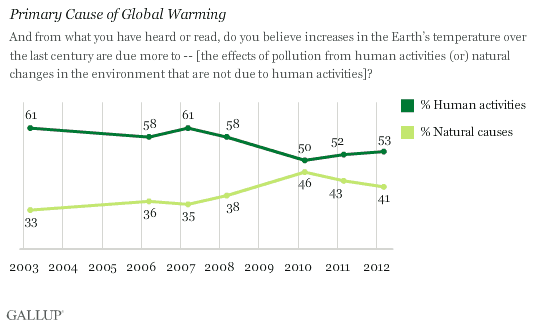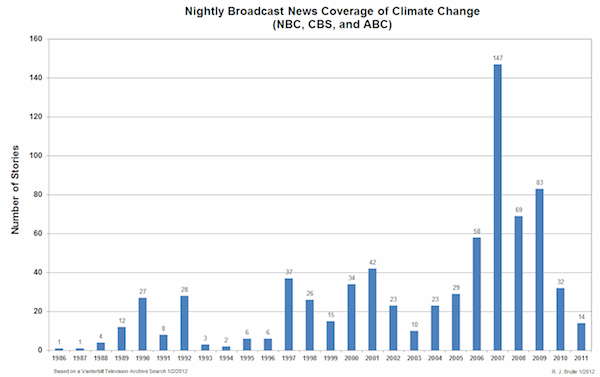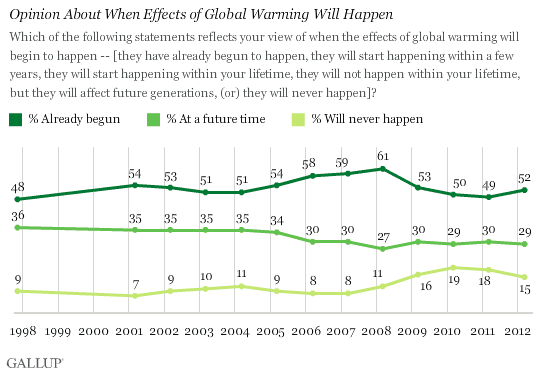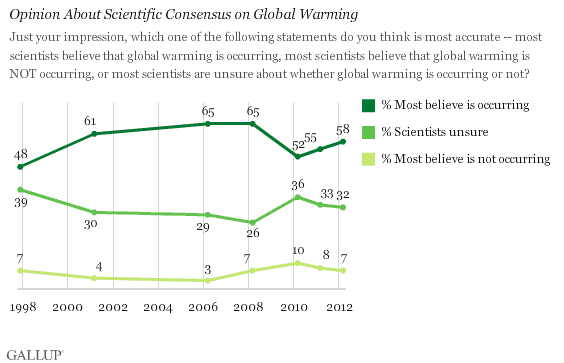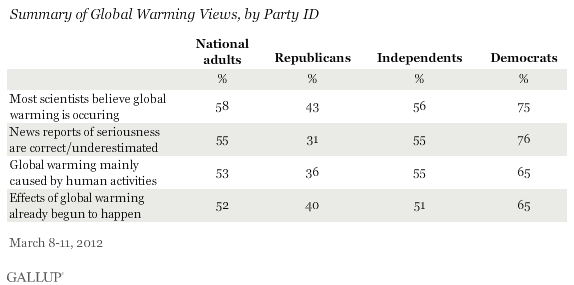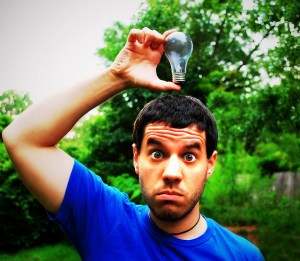
I think they're getting it. (Photo by B Rosen.)
Cross-posted from Climate Progress.
To go by the polls, the high point of public understanding of climate science was 2006 to 2008. That’s no surprise, since that period saw a peak in media reporting on climate science, starting in 2006 with An Inconvenient Truth, the documentary of Al Gore’s PowerPoint presentation on climate science, and continuing in 2007 with the four scientific assessment reports of the Intergovernmental Panel on Climate Change.
Disputes on the science were kept to a minimum in the 2008 election since both major candidates — Barack Obama and John McCain — understood and articulated both climate science and the need for action. It wasn’t until after Obama was elected with progressive majorities in both houses of Congress and the prospects for climate action became real that the anti-science disinformation campaign kicked into overdrive.
Ironically, or tragically, just as the anti-science disinformation campaign was ramping up, the advocates of climate action decided to downplay climate in their pitch for action, as the Washington Post’s Ezra Klein explained it in his June 2010 article “Can you solve global warming without talking about global warming?”
And the media’s coverage of climate science has utterly collapsed. Indeed, evening news coverage dropped from over 386 minutes of coverage in 2007 to 32 minutes (!) last year:
Because of this collapse in media coverage, Gallup’s polling question that begins “from what you’ve read or heard” is not an ideal way to find out what the public actually knows, as leading social scientists explained to me last year.
Many polls indicate a rebound in public understanding of climate science. Krosnick attributes some of the rebound to the coverage of climate during the GOP presidential contest.
Brookings — and the public itself — puts the rebound on the amazing spate of extreme weather. As Climate Progress reported in late February, Americans are attributing their increased belief in global warming to their (correct) perception that the planet is warming and the weather is getting more extreme. Roughly half of people who believe in global warming said that these were the primary influence:
Gallup, for whatever reason, has decided to downplay the continuing, albeit small, rise in public understanding, as evidenced in their headline: “In U.S., Global Warming Views Steady Despite Warm Winter.” But in fact:
- Their data do show movement in views: The jump in the public’s view of “when effects of global warming will happen” is as large a one-year jump as you can find in their 14-year record (see chart below).
- The winter was indeed unusually warm, but this poll preceded the off-the-charts heat wave in mid-March that blanketed much of the country for an extended period of time and drove a considerable amount of media coverage.
I’d love to see them redo the poll right now.
We see a similar jump in the public’s understanding of the scientific consensus about global warming:
This is all the more remarkable because the president and the media are hardly talking about the subject — though there was certainly a fair amount of media blowback from Rick Perry’s disinformation about the scientific consensus, in part because fellow Republican Jon Huntsman took him on.
And this move is also remarkable because the Tea Party crowd, largely conservative Republicans, generally get their news from sources that have continued spreading nonstop disinformation. Gallup’s figures suggest that the polling numbers for Republicans have hardly budged, which means most of the movement is due to shifts in the views of independents and progressives.
Certainly the partisan divide is large, as Gallup reports:
But again this is mostly the Tea Party crowd, especially conservative Republican males, and that’s what makes climate change a wedge issue.


